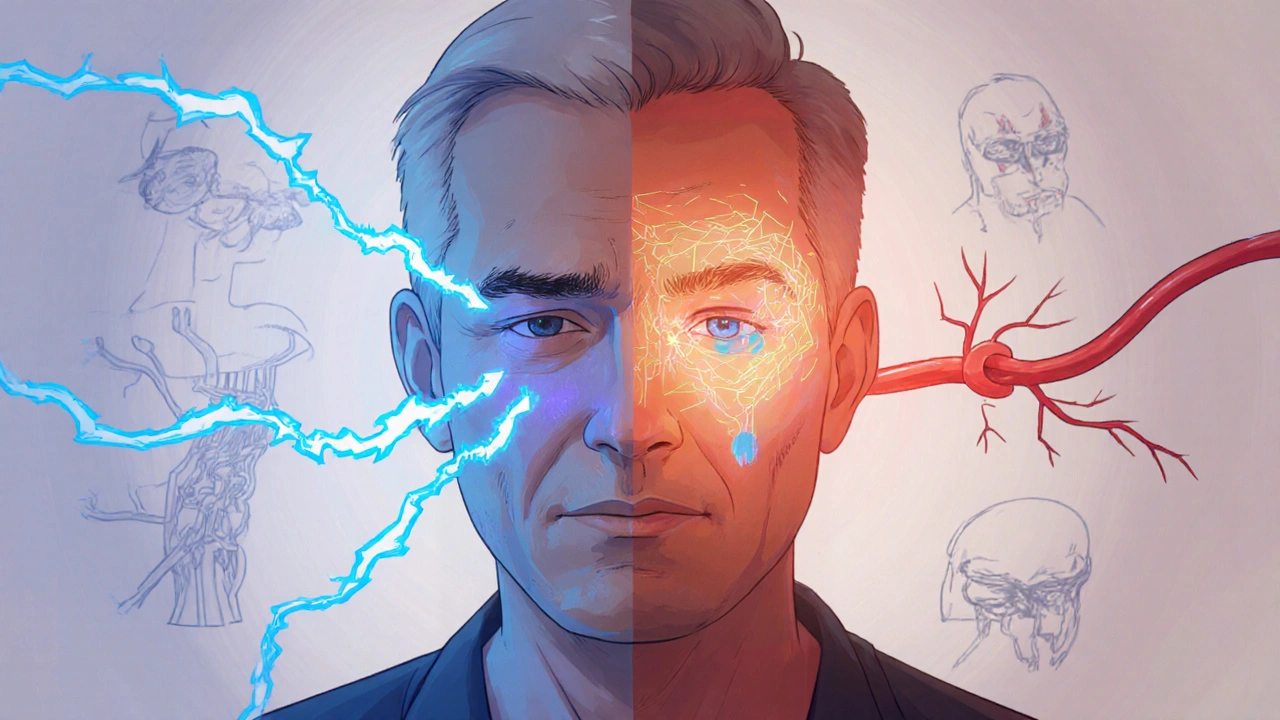Explore how trigeminal neuralgia and cluster headaches intersect, their shared mechanisms, diagnostic tips, and treatment strategies for patients facing both disorders.
Trigeminal Neuralgia: Causes, Treatments, and Medications That Help
When you feel a sharp, electric shock in your face—like a lightning strike with no warning—you might be dealing with trigeminal neuralgia, a chronic nerve condition that causes sudden, severe facial pain. Also known as tic douloureux, it hits the trigeminal nerve, the main facial nerve responsible for sensation in the jaw, cheek, and forehead. This isn’t just a headache. It’s pain so intense it can make brushing your teeth, talking, or even a breeze on your skin unbearable.
This condition doesn’t show up on regular scans, which is why so many people go undiagnosed for months or years. Doctors often rule out dental problems first, then look for nerve compression—usually from a blood vessel pressing on the nerve near the brainstem. In some cases, multiple sclerosis or tumors are the cause. But for most, it’s just the nerve itself misfiring. That’s where carbamazepine, a seizure and nerve pain medication often used as the first-line treatment for trigeminal neuralgia comes in. It doesn’t cure the problem, but it can calm those wild nerve signals. Many people get relief, but side effects like dizziness or drowsiness can be tough. That’s why alternatives like oxcarbazepine, gabapentin, or even surgery become part of the conversation.
What you won’t find in most doctor’s offices is the real-world stuff: how people manage pain between doses, what foods to avoid, why some get relief with cold compresses while others swear by acupuncture, or how long it takes to find the right combo of meds. The posts below don’t just list drugs—they compare carbamazepine, a key medication for nerve pain with other options, break down why some work better than others, and explain what happens when your body stops responding. You’ll also see how this pain connects to other conditions like multiple sclerosis, and why certain meds like beta-blockers or anticonvulsants might be chosen over others based on your full health picture.
There’s no one-size-fits-all fix for trigeminal neuralgia. What works for one person might do nothing—or cause worse side effects—for another. The goal isn’t to find a miracle cure. It’s to find a manageable rhythm: less pain, fewer attacks, and more days where you can eat, talk, and live without fear. The articles here give you the facts you won’t get in a 10-minute appointment. No fluff. Just what you need to ask your doctor, adjust your routine, and take back control.

